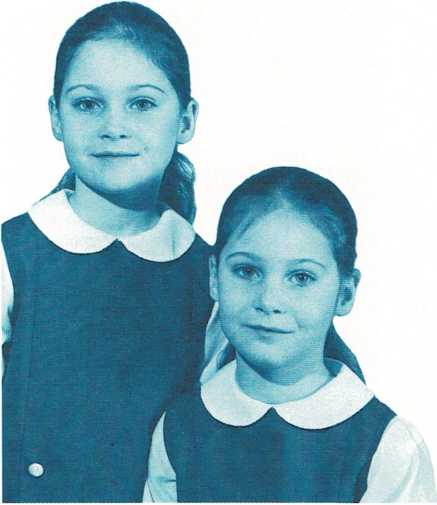Heredity – Hereditary Diseases
Heredity. The kind of person your child will be is determined to a
great extent at the moment of conception, when the sperm from the father
unites with the egg from the mother. If scientists could translate the
chemical code inside the tiny fertilized egg, they could tell whether
the child is to be a boy or girl, blue- or brown-eyed, blond or
dark-haired. The storehouse of this information lies in the chromosomes.
Under a microscope, chromosomes appear as dark strings in the nucleus of
each body cell. With the exception of the sex cells (the sperm and the
egg), 46 chromosomes are in each cell of the human body. Egg and sperm
cells each have 23 chromosomes. In fusing, they give the fertilized egg
the total of 46 chromosomes.
Whether the fertilized egg develops into a boy or a girl is determined
by two special chromosomes—the sex chromosomes. Every egg bears a
chromosome known as the X chromosome and every sperm bears either an X
or a Y chromosome. When the sex
chromosomes meet in the fertilized egg, an XX baby will be a girl and an
XY baby, a boy.
When an egg cell is fertilized by a sperm cell, it starts to grow.
First, it divides into two cells; then into four cells; then into eight
cells, and so on—until it produces all the cells in a baby’s body.
During each cell division, the 46 chromosomes in a cell duplicate
themselves so that each new cell gets an identical group of 46
chromosomes. The 46 chromosomes are composed of two sets— one set of
23 chromosomes from the individual’s father and one set of 23 from the
mother. Each chromosome in one set of 23 can be matched to a particular
chromosome in the other set. In a girl, the 23 pairs of chromosomes look
alike. In a boy, one pair of chromosomes, unlike the other 22 pairs,
does not look alike. In a girl, the two sex chromosomes (XX) look alike.
In a boy, the chromosomes (XY) do not look alike.
Genes determine heredity traits. Hundreds of tiny particles called
genes are arranged in a line along the length of each

Identical twins look almost exactly alike because they develop from a
single egg cell and, therefore, inherit the same genes.
chromosome. Genes control a child’s inherited traits, such as the blood
group, bloodclotting ability, sensitivity to certain tastes, and hair
color.
DNA (deoxyribonucleic acid) is the key chemical compound of a gene. DNA
is a molecule that consists of two threadlike strands that are connected
by crosspieces. The two strands are wound around each other. The
structure (called a double helix) looks like a rope ladder twisted into
a spiral. A DNA molecule makes an exact duplicate during cell division.
Except in certain instances of sex-linked traits, there are two genes
for every trait— one gene on a chromosome in the set of 23 from the
individual’s mother, and one gene on the matching chromosome in the set
of 23 from the father. In many traits, the action of one gene overpowers
the action of the other. The more powerful gene is called dominant, and
the other gene is called recessive. The gene for brown eyes is dominant
over that for blue eyes. If a child gets a gene for brown eyes from the
father and a gene for blue eyes from the mother, the child will have
brown eyes. Except in certain instances of sex-linked traits, it takes
two recessive genes to make a recessive trait show up. Both chromosomes
must carry the gene for blue eyes for a child to have blue eyes. The
individual with one gene for blue eyes and one for brown may transmit
either gene to the next generation, because only one chromosome from the
pair (and therefore only one gene), goes into the sperm or egg cells.
Genes are not always either dominant or recessive. This situation is
called incomplete dominance. Three genes—which may be designated A,
B, and a—control the inheritance of blood-group types. (Even though
there are three genes, the most any person can have is two.) A and B
are dominant to a, but they are incompletely dominant to each other. If
a child inherits a dominant A gene from each parent or a dominant A
gene from one parent and a recessive a gene from the other, the child
has blood type A. If the child inherits a dominant B gene from each
parent or a dominant B gene from one parent and a recessive a gene
from the other, the child has blood type B. However, if the
child inherits an A gene from one parent and a B gene from the
other, the child’s blood type is neither A nor B. It is type AB because
of incomplete dominance between genes A and B. If the child inherits
a recessive a gene from each parent, the child’s blood type is 0.
Sex-linked traits. The genes on the X and Y chromosomes determine
traits that are called “sex-linked” because these genes are carried on
the sex chromosomes. Color blindness is one sex-linked trait.
Color vision is controlled by a gene located on the X chromosome. The Y
chromosome has no gene for color vision. A boy (XY) has only one X
chromosome, and, therefore, only one gene for color vision. A girl (XX)
has two X chromosomes, and, therefore, two genes for color vision. If a
boy inherits a gene for color blindness, he is color-blind. But, since
the gene for normal vision is dominant and the gene for color blindness
is recessive, a girl is color-blind only when she inherits two genes for
color blindness—one from her mother and one from her father. If she
inherits only one gene for color blindness, she has normal vision, but
she is a carrier of color blindness. Since a father does not pass on his
X chromosomes to his sons, the sons of a colorblind father never have
the disorder unless their mother is a carrier. However, his daughters
are carriers and transmit the defective X chromosome to about half their
sons and half their daughters.
Another example of a sex-linked trait is hemophilia, a disease in which
blood does not clot normally. Queen Victoria was just a carrier and did
not have the disease. Because she was XX, the gene on her “good” X
chromosome overcame the recessive hemophilia gene on the other X
chromosome. Those of Queen Victoria’s male descendants who received her
defective X chromosome had the disease, and those who received the good
X chromosome did not. Those of Queen Victoria’s female descendants who
received her defective X chromosome became carriers of the disease.
Not all hereditary diseases are caused by sex-linked genes. Some
hereditary diseases, such as sickle cell anemia, always require two
recessive genes.
Hereditary diseases. Scientists are studying hereditary diseases, trying
to discover how body chemistry sometimes goes wi-ong. If the mistake can
be corrected—by a drug or a change in diet—the person with an inborn
defect of metabolism, for example, can lead a normal life.
Diabetes mellitus is a condition in which the body does not utilize
carbohydrates normally. It can be controlled by giving insulin, a
hormone that the diabetic does not produce in sufficient quantity.
Phenylketonuria (PKU) is a hereditary disease in which the newborn child
cannot properly use part of the protein in milk. If this abnormality
goes unchecked, it eventually causes developmental challenge. A blood test or
a test of a diaper wet by urine shows the doctor whether the disease is
present. If it is, the doctor immediately prescribes a special diet to
help the child develop normally.
Another important area of genetic research is the detection of carriers
of hereditary diseases. The earner of a recessive gene that causes a
hereditary disease is apparently different from the normal person. In
the case of the phenylketonuria gene, a blood test indicates that
individuals with one gene for the disease can be identified, even though
they are not sick in any way. Scientists are searching for tests to
detect carriers of bad genes, because if one carrier marries another,
the chances are one out of four that any child of theirs will have the
disease in question. Marriage between cousins is more likely to produce
a child with a hereditary disease. If one partner carries a recessive
gene, a member of the same family is more likely than usual to carry it,
too. Because the field of hereditary disease is changing so rapidly,
parents should discuss any questions with their doctor.
Mutations and abnormalities. Occasionally, changes take place
spontaneously in genes. This change is called mutation. A mutant gene is
transmitted in the same way that normal genes are. All the bad genes
mentioned (those that cause such diseases are hemophilia and diabetes
mellitus) arose from mutations. Radiation from X rays, ultraviolet
light, and fallout may also cause mutations. Some mutations are the
cause of early miscarriages.
Besides mutations, there are chromosomal abnormalities consisting of too
many, too few,.or altered chromosomes. Down’s syndrome (Mongolism), a
form of mental retardation, is characterized by an extra chromosome or
an altered chromosome. [mg]

